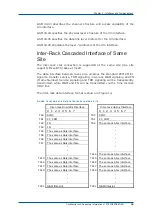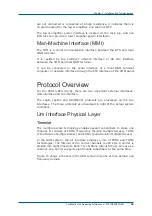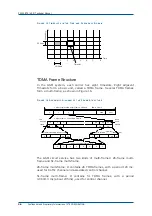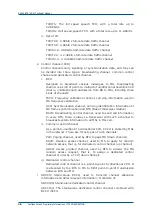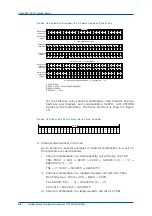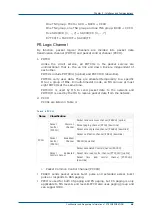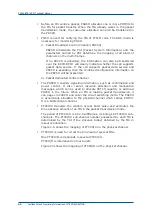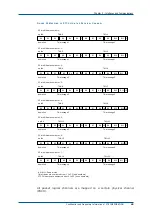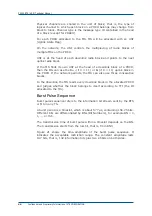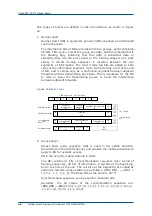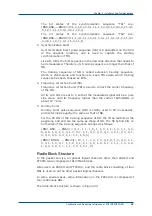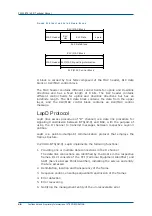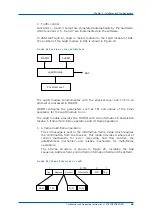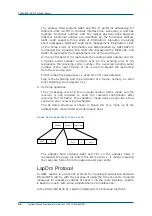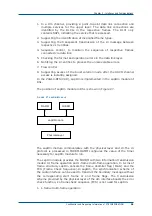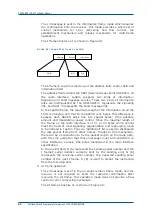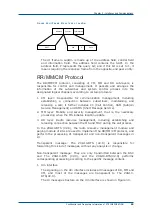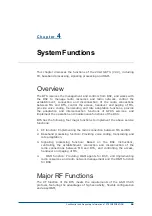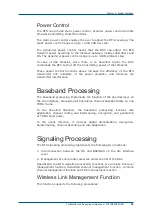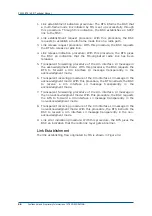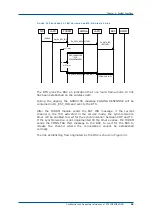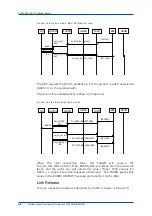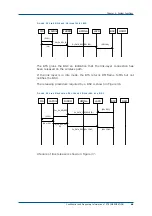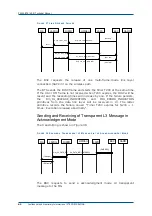
Chapter 3 - Interfaces and Communications
Confidential and Proprietary Information of ZTE CORPORATION 47
The bit states of the synchronization sequence “TS1” are:
(BN8,BN9,
…
,BN48)=(0,1,0,1,0,1,0,0,1,1,1,1,1,0,0,0,1,0,0,0,0,1,1,0,0
,0,1,0,1,1,1,1,0,0,1,0,0,1,1,0,1).
The bit states of the synchronization sequence “TS2” are:
(BN8,BN9,
…
,BN48)=(1,1,1,0,1,1,1,1,0,0,1,0,0,1,1,1,0,1,0,1,0,1,1,0,0
,0,0,0,1,1,0,1,1,0,1,1,1,0,1,1,1).
3. Synchronization burst
Synchronization burst pulse sequence (SB) is transmitted on the SCH
in the downlink direction, and is used to capture the starting
synchronization of MS.
Like AB, SB is the first sequence in the downlink direction that needs to
be demodulated. Therefore, its training sequence is longer than that of
NB.
The training sequence of SB is called extension training sequence,
which is stand-alone and functions to keep MS aware which training
sequence has been chosen by BTS.
4. Frequency correction burst (FB)
Frequency correction burst (FB) is used to correct the carrier frequency
of the MS.
All its 148 bits are set to 0 so that the modulated signal will be a pure
sine wave, with its frequency higher than the carrier 1625/24kHz or
about 67.7 kHz.
5. Dummy burst
Dummy burst pulse sequence (DB) is chiefly used to fill in vacancies,
and its format is exactly the same as that of NB.
For the 26 bits of the training sequence of DB, the three tail bits at the
beginning and end are the same as those of NB. The 58 hybrid bits on
both sides of the training sequence arranged as follows:
(BN3, BN4, ..., BN60) = (1, 1, 1, 1, 1, 0, 1, 1, 0, 1, 1, 1, 0, 1, 1, 0, 0,
0, 0, 0, 1, 0, 1, 0, 0, 1, 0, 0, 1, 1, 1, 0, 0, 0, 0, 0, 1, 0, 0, 1, 0, 0, 0, 1,
0, 0, 0, 0, 0, 0, 0, 1, 1, 1, 1, 1, 0, 0)
(BN87, BN88, ..., BN144) = (0, 1, 1, 1, 0, 1, 0, 0, 1, 0, 1, 0, 0, 0, 1, 1,
0, 0, 1, 1, 0, 0, 1, 1, 1, 0, 0, 1, 1, 1, 1, 0, 1, 0, 0, 1, 1, 1, 1, 1, 0, 0, 0,
1, 0, 0, 1, 0, 1, 1, 1, 1, 1, 0, 1, 0, 1, 0)
Radio Block Structure
In the packet service, all packet logical channels other than PRACH and
PTCCH/U are composed of RLC/MAC blocks.
AB is used on PRACH and PTCCH/U, and the radio block consisting of four
NBs is used on all the other packet logical channels.
In some special cases, some information on the PACCH/U is composed of
four continuous ABs.
The radio block structure is shown in Figure 23.
Содержание ZXG10-BTS
Страница 4: ...This page is intentionally blank ...
Страница 8: ...Figures 121 Tables 123 ...
Страница 9: ...This page is intentionally blank ...
Страница 10: ......
Страница 16: ...Confidential and Proprietary Information of ZTE CORPORATION xvi This page is intentionally blank ...
Страница 134: ...118 Confidential and Proprietary Information of ZTE CORPORATION This page is intentionally blank ...

